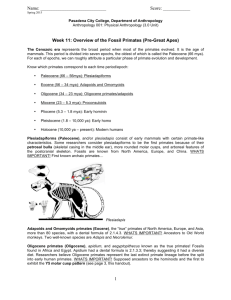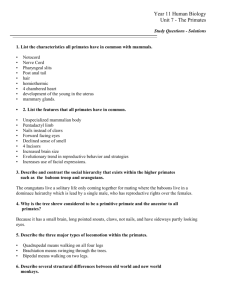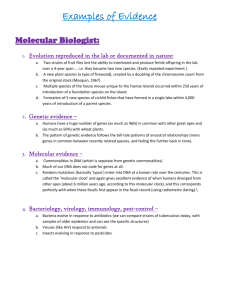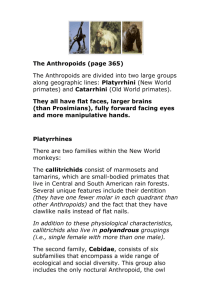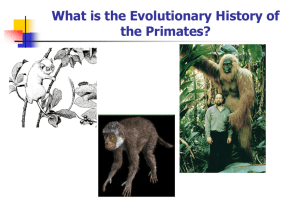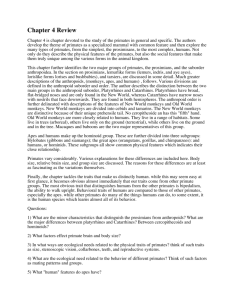Anthro 102 Flowchart of Primate Relationships and Features
advertisement
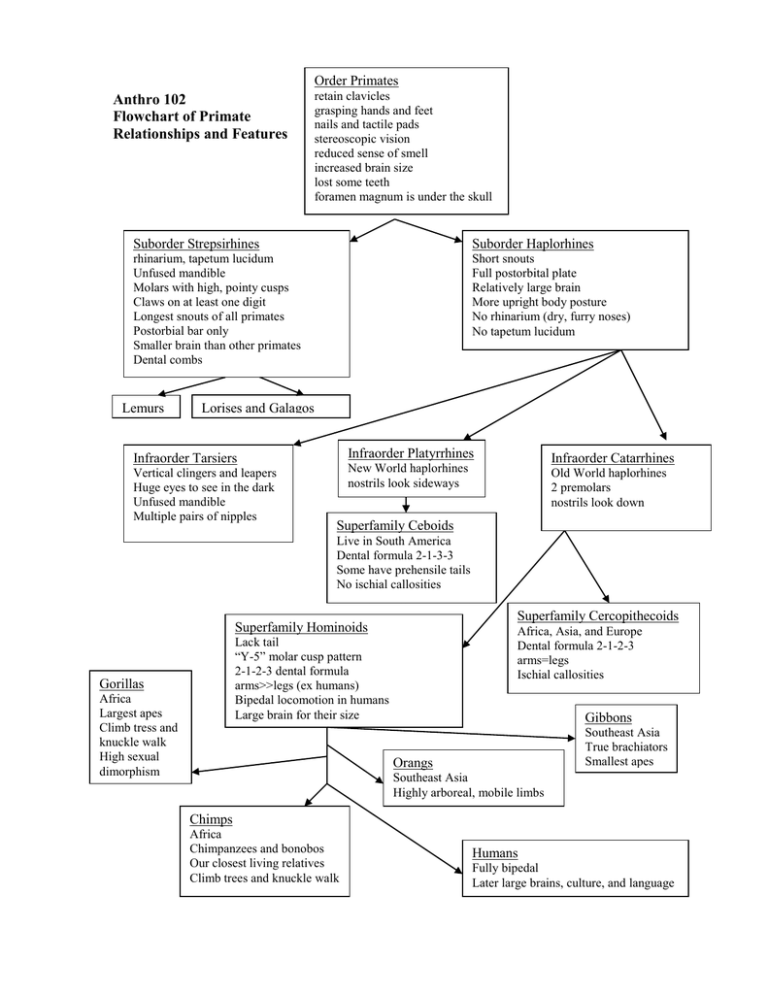
Order Primates Anthro 102 Flowchart of Primate Relationships and Features retain clavicles grasping hands and feet nails and tactile pads stereoscopic vision reduced sense of smell increased brain size lost some teeth foramen magnum is under the skull Suborder Strepsirhines Suborder Haplorhines rhinarium, tapetum lucidum Unfused mandible Molars with high, pointy cusps Claws on at least one digit Longest snouts of all primates Postorbial bar only Smaller brain than other primates Dental combs Short snouts Full postorbital plate Relatively large brain More upright body posture No rhinarium (dry, furry noses) No tapetum lucidum Lemurs Lorises and Galagos Infraorder Platyrrhines Infraorder Tarsiers Vertical clingers and leapers Huge eyes to see in the dark Unfused mandible Multiple pairs of nipples Infraorder Catarrhines New World haplorhines nostrils look sideways Old World haplorhines 2 premolars nostrils look down Superfamily Ceboids Live in South America Dental formula 2-1-3-3 Some have prehensile tails No ischial callosities Superfamily Cercopithecoids Superfamily Hominoids Africa, Asia, and Europe Dental formula 2-1-2-3 arms=legs Ischial callosities Lack tail “Y-5” molar cusp pattern 2-1-2-3 dental formula arms>>legs (ex humans) Bipedal locomotion in humans Large brain for their size Gorillas Africa Largest apes Climb tress and knuckle walk High sexual dimorphism Gibbons Southeast Asia True brachiators Smallest apes Orangs Southeast Asia Highly arboreal, mobile limbs Chimps Africa Chimpanzees and bonobos Our closest living relatives Climb trees and knuckle walk Humans Fully bipedal Later large brains, culture, and language When did these primates groups evolve? There are four important stages in primate evolution, each occurring in different geologic epochs. 1. Paleocene (65 – 53 million years ago [mya]) – A group of animals called Plesiadapiforms lived in Europe and North America. These used to be considered the earliest primates. However, as scientists learn more about these animals, they realized that they are closely related to us, but are not primates at all. 2. Eocene (53 –37 mya) – The first Strepsirhines appeared. There were two major groups, some that looked like tarsiers called Omomyiforms, and some that looked like modern lemurs called Adapiforms. We do not know which one we evolved from. Both groups lived in Europe and North America, which separated due to continental drift during this time 3. Oligocene (37 – 22.5 mya) – The first Haplorhines appeared. They appeared in Egypt, but may also have been in Asia or other parts of Africa. None are in Europe and North America. An important genus of early haplorhine was Aegyptopithecus. Aegyptopithecus and its relatives are ancestors of later monkeys, apes and humans. 4. Miocene (22.5 – 5 mya) – The first hominoids appeared; there were hundreds of species in Africa, Asia, and Europe, as compared with only 6 types today. There were very diverse in size, ranging in size from cat-size to gorilla-size, and adaptations. The first ceboids appear in South America. The first cercopithecoids appeared in Africa, but there were only a few species then, as compared with hundreds of species today.
